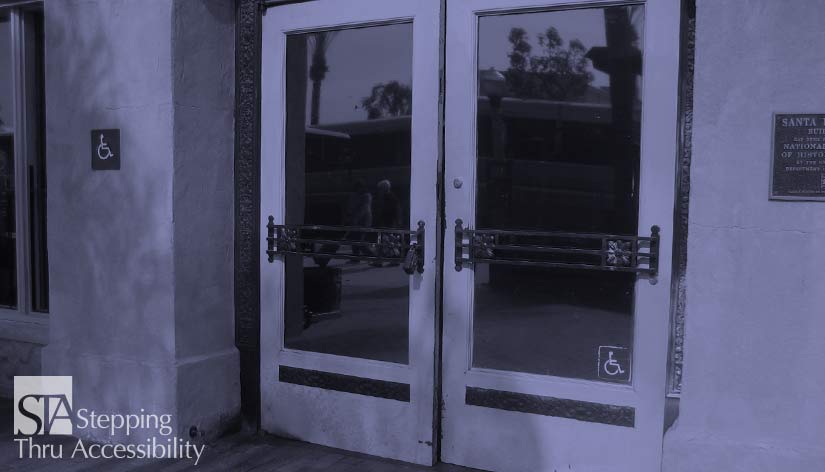Blog
Return to Blog »
Janis Kent, Architect, FAIA, CASp © August, 2020 The question has come up as to whether manual doors need to be maintained to be accessible. And the answer is – yes, absolutely. The door itself and its clear floor space need to be maintained so that the space is firm and stable and that it continues to meet the requirements of 2.083% maximum slope with a smooth surface on the push side of the door to 10″ above the finished floor. The threshold piece should be sufficiently secured to the floor so the height differential is maintained as compliant. But this is more of ongoing building maintenance. There are 2 mechanical items that doors and gates need to have addressed for ongoing maintenance as well, in order to meet accessibility requirements for the ADA Standards as well as Codes. If a door or a gate has a closer, then the closing speed has to be maintained to be 5 seconds minimum from the 90° open position to 12° from the strike side. The closer mechanism needs to be adjusted as time goes on and this is applicable for both interior and exterior doors and gates. So this is true for any type of passage door whether exterior, interior, egress, or toilet compartments, although the latter tends to have spring hinges. There is a different requirements for closing speed for doors with spring hinges. Now the other element is the operating force. This is required to be a maximum of 5 lbs for interior doors and gates and 15 lbs maximum for required fire rated doors. Local jurisdictions may stipulate less than 15 lbs, though. In California there is also a requirement for exterior doors to also meet the 5 lbs operating force as well. This is difficult if there are heavy winds and may require the need for a low energy door opening device to be installed in order to maintain the operating force. And quite frankly, I would suggest this be addressed outside of California as well to provide for more access particularly in areas where it is very windy. This is an ongoing obligation under ADA and these closer mechanisms need to be maintained in order to continue to be accessible. (a) A public accommodation shall maintain in operable working condition those features of facilities and equipment that are required to be readily accessible to and usable by persons with disabilities by the Act or this part. One can purchase special door force gauges (commonly referred to as a pressure gauge), to test the operating force, but this requires knowledge on how to use the device. Generally you are holding it at right angles to the face of the door and placing it just above the door handle. The door should be cracked open enough so the push side of the door is aligned with the outside edge of the frame or casing. Then an even slow motion is to be used to open the door, keeping the device at right angles. The door should also be able to be opened to 90°. What you many times will find is the first half or a bit more of the swing has the higher operating force, but not always. Related Article: Doors – Power Assist and Low Energy If the closing speed and/or the operating force is not compliant then the closer mechanism needs to be adjusted. With some doors the mechanism is too old and may need to be replaced. I have also found on newer installations that the closer was not specified correctly for the door, particularly for larger doors, and therefor the mechanism can not be adjusted enough to obtain the maximum force and minimum speed and the mechanism may also need to be replaced. The bottom line is, this aspect of doors and gates is required to be maintained under the ADA Standards. Whether this is an annual ‘tune-up’ or more or less often may depend upon the age and conditions of the building and even upon the closer mechanisms installed. Having the doors compliant provides for more access, and, perhaps less legal challenges. Nothing in this blog or publication constitutes legal or design advice for a particular project or circumstance. Be aware that your local City or County may have additional requirements that are different or more restrictive than the State or Federal requirements. Also, this article is an interpretation and opinion of the writer which may vary for a particular project or due to other circumstances. It is meant as a general summary – current original regulations should always be reviewed when making any decisions and specific advice by a qualified professional should be secured for a particular project or circumstance. © Janis Kent, FAIA, Architect, CASp 2020 Inquire About Consulting ServicesDoors and Gates – What they need for ongoing maintenance

Closing Speed
Operating Force
§ 36.211 Maintenance of accessible features.
Contact us for more information about our consulting services
Contact us for more information about booking public or seminars on this topic or others